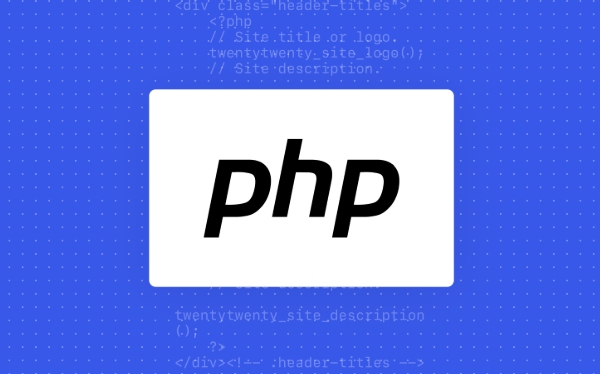 Backend Development
Backend Development
 PHP Tutorial
PHP Tutorial
 A Comparative Analysis: Asynchronous PHP vs. Node.js for I/O-Bound Tasks
A Comparative Analysis: Asynchronous PHP vs. Node.js for I/O-Bound Tasks
A Comparative Analysis: Asynchronous PHP vs. Node.js for I/O-Bound Tasks
Aug 02, 2025 pm 02:42 PMNode.js is better suited for I/O-bound tasks than asynchronous PHP. 1. Node.js uses a native event loop for efficient concurrency, while async PHP relies on external tools like Swoole or ReactPHP. 2. Node.js achieves higher throughput and lower memory usage in I/O scenarios, though Swoole-powered PHP can perform comparably but with higher memory consumption and limited hosting support. 3. Node.js has a mature, async-first ecosystem with extensive tooling and frameworks, whereas PHP’s async support is fragmented and harder to debug. 4. Choose Node.js for real-time, scalable applications with strong ecosystem needs; choose async PHP when extending existing PHP systems in controlled environments with Swoole. Ultimately, Node.js leads in performance and developer experience for I/O-heavy workloads, while async PHP is viable in specific, constrained contexts.

When it comes to handling I/O-bound tasks—like file operations, database queries, API calls, or network requests—choosing the right backend technology can significantly impact performance, scalability, and developer experience. Two popular options, PHP and Node.js, have evolved over the years, with both now supporting asynchronous programming models. But how do they really stack up when used asynchronously for I/O-heavy workloads?

Let’s break down asynchronous PHP (via extensions like Swoole or ReactPHP) versus Node.js (native async with V8 and libuv) in the context of I/O-bound operations.
1. Concurrency Model: Event Loop vs. Hybrid Approaches
Node.js runs on a single-threaded event loop powered by libuv, which efficiently manages asynchronous I/O using non-blocking system calls. This model excels at handling thousands of concurrent connections with minimal overhead—ideal for I/O-bound scenarios like real-time APIs or proxy servers.

// Node.js: Non-blocking file read
fs.readFile('/large-file.txt', (err, data) => {
console.log('File loaded');
});Meanwhile, traditional PHP is synchronous and process-based (one request = one process/thread), which doesn’t scale well under high concurrency. However, tools like Swoole and ReactPHP introduce true async capabilities:
- Swoole embeds an event loop directly into PHP, enabling long-running server processes.
- ReactPHP provides a low-level event-driven framework using streams and promises.
// ReactPHP: Async file read
$loop->addReadStream($file, function ($file) use ($loop) {
echo "Data read\n";
});? Verdict: Node.js has a native, mature event loop. Asynchronous PHP requires external tools and is less standardized.

2. Performance in I/O Scenarios
For I/O-bound tasks such as fetching data from a database or calling external APIs, both platforms can avoid blocking the main thread—but efficiency differs.
| Metric | Node.js | Async PHP (Swoole/ReactPHP) |
|---|---|---|
| Request throughput | High (thousands/sec) | High (with Swoole) |
| Memory usage | Moderate | Higher (Swoole workers hold state) |
| Startup time | Fast | Slower (long-running processes) |
| Cold starts | Minimal | N/A (persistent runtime) |
In benchmarks involving concurrent HTTP requests or WebSocket connections, Node.js typically outperforms async PHP due to its lightweight callbacks and optimized V8 engine.
However, Swoole-powered PHP can come close—especially when leveraging coroutine-based syntax that feels synchronous but runs asynchronously:
// Swoole coroutine
go(function () {
$client = new Swoole\Coroutine\Http\Client('httpbin.org', 443, true);
$client->get('/');
echo $client->body;
});?? But Swoole is not available on all hosting environments (e.g., shared hosting, traditional PHP-FPM setups), limiting portability.
3. Ecosystem & Developer Experience
Node.js shines here. Its entire ecosystem is built around async-first design:
- Native
Promise,async/await - Rich npm packages for HTTP, WebSocket, streaming
- Frameworks like Express, Fastify, NestJS all embrace non-blocking patterns
PHP, historically sync-first, requires a paradigm shift:
- You can't mix traditional
mysql_query()with ReactPHP streams. - Debugging async PHP is harder (stack traces across callbacks, no dev tools like Chrome DevTools).
- Most Laravel/Symfony apps still run on FPM—async remains niche.
That said, Swoole enables impressive features:
- Built-in WebSocket servers
- Task workers for background jobs
- Hot reload and coroutine MySQL clients
But adoption is fragmented. There’s no universal standard for async PHP like there is in Node.js.
4. Use Case Fit: When to Choose Which?
? Choose Node.js if:
- You're building real-time apps (chat, live dashboards)
- Your team is comfortable with JS/TS
- You want maximum I/O concurrency with minimal resources
- You value ecosystem maturity and tooling
? Choose Asynchronous PHP if:
- You're already invested in PHP (e.g., Laravel ecosystem)
- You need long-lived processes (e.g., daemons, WebSocket servers) without leaving PHP
- You're using Swoole in a controlled environment (Docker, Kubernetes, VPS)
Example: A Laravel app using Swoole to handle WebSockets alongside REST APIs can benefit from shared code and auth logic—avoiding a separate Node.js service.
Final Thoughts
While Node.js remains the stronger choice for I/O-bound, high-concurrency applications, asynchronous PHP via Swoole or ReactPHP has closed the gap in raw performance. However, the latter suffers from lower adoption, tooling limitations, and deployment complexity.
In practice:
- For greenfield, scalable I/O-heavy services → Go with Node.js
- For enhancing existing PHP systems with async features → Swoole is a powerful option
Ultimately, it’s not just about technical capability—it’s about team expertise, ecosystem support, and operational constraints.
Basically, Node.js was built for this. Async PHP is playing catch-up—and doing a decent job, but only in specific scenarios.
The above is the detailed content of A Comparative Analysis: Asynchronous PHP vs. Node.js for I/O-Bound Tasks. For more information, please follow other related articles on the PHP Chinese website!

Hot AI Tools

Undress AI Tool
Undress images for free

Undresser.AI Undress
AI-powered app for creating realistic nude photos

AI Clothes Remover
Online AI tool for removing clothes from photos.

Clothoff.io
AI clothes remover

Video Face Swap
Swap faces in any video effortlessly with our completely free AI face swap tool!

Hot Article

Hot Tools

Notepad++7.3.1
Easy-to-use and free code editor

SublimeText3 Chinese version
Chinese version, very easy to use

Zend Studio 13.0.1
Powerful PHP integrated development environment

Dreamweaver CS6
Visual web development tools

SublimeText3 Mac version
God-level code editing software (SublimeText3)

Hot Topics
 How to use PHP to build social sharing functions PHP sharing interface integration practice
Jul 25, 2025 pm 08:51 PM
How to use PHP to build social sharing functions PHP sharing interface integration practice
Jul 25, 2025 pm 08:51 PM
The core method of building social sharing functions in PHP is to dynamically generate sharing links that meet the requirements of each platform. 1. First get the current page or specified URL and article information; 2. Use urlencode to encode the parameters; 3. Splice and generate sharing links according to the protocols of each platform; 4. Display links on the front end for users to click and share; 5. Dynamically generate OG tags on the page to optimize sharing content display; 6. Be sure to escape user input to prevent XSS attacks. This method does not require complex authentication, has low maintenance costs, and is suitable for most content sharing needs.
 How to use PHP combined with AI to achieve text error correction PHP syntax detection and optimization
Jul 25, 2025 pm 08:57 PM
How to use PHP combined with AI to achieve text error correction PHP syntax detection and optimization
Jul 25, 2025 pm 08:57 PM
To realize text error correction and syntax optimization with AI, you need to follow the following steps: 1. Select a suitable AI model or API, such as Baidu, Tencent API or open source NLP library; 2. Call the API through PHP's curl or Guzzle and process the return results; 3. Display error correction information in the application and allow users to choose whether to adopt it; 4. Use php-l and PHP_CodeSniffer for syntax detection and code optimization; 5. Continuously collect feedback and update the model or rules to improve the effect. When choosing AIAPI, focus on evaluating accuracy, response speed, price and support for PHP. Code optimization should follow PSR specifications, use cache reasonably, avoid circular queries, review code regularly, and use X
 PHP creates a blog comment system to monetize PHP comment review and anti-brush strategy
Jul 25, 2025 pm 08:27 PM
PHP creates a blog comment system to monetize PHP comment review and anti-brush strategy
Jul 25, 2025 pm 08:27 PM
1. Maximizing the commercial value of the comment system requires combining native advertising precise delivery, user paid value-added services (such as uploading pictures, top-up comments), influence incentive mechanism based on comment quality, and compliance anonymous data insight monetization; 2. The audit strategy should adopt a combination of pre-audit dynamic keyword filtering and user reporting mechanisms, supplemented by comment quality rating to achieve content hierarchical exposure; 3. Anti-brushing requires the construction of multi-layer defense: reCAPTCHAv3 sensorless verification, Honeypot honeypot field recognition robot, IP and timestamp frequency limit prevents watering, and content pattern recognition marks suspicious comments, and continuously iterate to deal with attacks.
 PHP calls AI intelligent voice assistant PHP voice interaction system construction
Jul 25, 2025 pm 08:45 PM
PHP calls AI intelligent voice assistant PHP voice interaction system construction
Jul 25, 2025 pm 08:45 PM
User voice input is captured and sent to the PHP backend through the MediaRecorder API of the front-end JavaScript; 2. PHP saves the audio as a temporary file and calls STTAPI (such as Google or Baidu voice recognition) to convert it into text; 3. PHP sends the text to an AI service (such as OpenAIGPT) to obtain intelligent reply; 4. PHP then calls TTSAPI (such as Baidu or Google voice synthesis) to convert the reply to a voice file; 5. PHP streams the voice file back to the front-end to play, completing interaction. The entire process is dominated by PHP to ensure seamless connection between all links.
 PHP realizes commodity inventory management and monetization PHP inventory synchronization and alarm mechanism
Jul 25, 2025 pm 08:30 PM
PHP realizes commodity inventory management and monetization PHP inventory synchronization and alarm mechanism
Jul 25, 2025 pm 08:30 PM
PHP ensures inventory deduction atomicity through database transactions and FORUPDATE row locks to prevent high concurrent overselling; 2. Multi-platform inventory consistency depends on centralized management and event-driven synchronization, combining API/Webhook notifications and message queues to ensure reliable data transmission; 3. The alarm mechanism should set low inventory, zero/negative inventory, unsalable sales, replenishment cycles and abnormal fluctuations strategies in different scenarios, and select DingTalk, SMS or Email Responsible Persons according to the urgency, and the alarm information must be complete and clear to achieve business adaptation and rapid response.
 How to use PHP to combine AI to generate image. PHP automatically generates art works
Jul 25, 2025 pm 07:21 PM
How to use PHP to combine AI to generate image. PHP automatically generates art works
Jul 25, 2025 pm 07:21 PM
PHP does not directly perform AI image processing, but integrates through APIs, because it is good at web development rather than computing-intensive tasks. API integration can achieve professional division of labor, reduce costs, and improve efficiency; 2. Integrating key technologies include using Guzzle or cURL to send HTTP requests, JSON data encoding and decoding, API key security authentication, asynchronous queue processing time-consuming tasks, robust error handling and retry mechanism, image storage and display; 3. Common challenges include API cost out of control, uncontrollable generation results, poor user experience, security risks and difficult data management. The response strategies are setting user quotas and caches, providing propt guidance and multi-picture selection, asynchronous notifications and progress prompts, key environment variable storage and content audit, and cloud storage.
 Beyond the LAMP Stack: PHP's Role in Modern Enterprise Architecture
Jul 27, 2025 am 04:31 AM
Beyond the LAMP Stack: PHP's Role in Modern Enterprise Architecture
Jul 27, 2025 am 04:31 AM
PHPisstillrelevantinmodernenterpriseenvironments.1.ModernPHP(7.xand8.x)offersperformancegains,stricttyping,JITcompilation,andmodernsyntax,makingitsuitableforlarge-scaleapplications.2.PHPintegrateseffectivelyinhybridarchitectures,servingasanAPIgateway
 PHP integrated AI speech recognition and translator PHP meeting record automatic generation solution
Jul 25, 2025 pm 07:06 PM
PHP integrated AI speech recognition and translator PHP meeting record automatic generation solution
Jul 25, 2025 pm 07:06 PM
Select the appropriate AI voice recognition service and integrate PHPSDK; 2. Use PHP to call ffmpeg to convert recordings into API-required formats (such as wav); 3. Upload files to cloud storage and call API asynchronous recognition; 4. Analyze JSON results and organize text using NLP technology; 5. Generate Word or Markdown documents to complete the automation of meeting records. The entire process needs to ensure data encryption, access control and compliance to ensure privacy and security.





